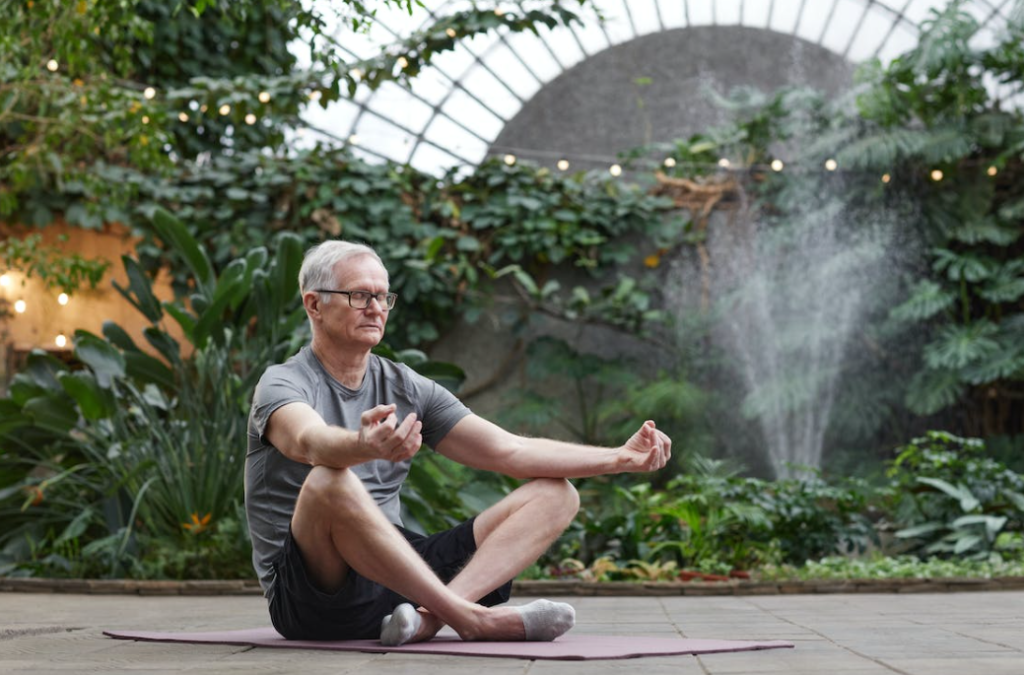Meditation For Healing
Discover the healing power of meditation and how to use it.

Selfpause Affirmation App
Download the app to get 1,000’s of affirmation meditations and everything you need to write, record and listen to your own.
Meditation is an effective way to reduce stress and promote healing. There are several kinds of meditation, including mindfulness, Sahaja, and Metta. All are based on different principles, but all can benefit your health. Below are some tips to help you start a meditation practice. To learn more, read our articles on guided meditation, mindfulness, and metta.
Guided meditation

Guided meditation for healing is a form of meditation that focuses on the mind. It can help you manage chronic pain and improve your health. These types of meditations often involve guided imagery. For example, someone suffering from chronic knee pain can visualize the inflamed tissue relaxing and the swelling reduces. These meditations can also reduce stress by clearing out thoughts that trigger anxiety. These effects will eventually result in a greater sense of well-being and emotional stability.
Guided meditation for healing can be used to help people heal from physical injuries, emotional heartaches, stress and anxiety, and illnesses. It works by triggering the body’s natural healing mechanisms. This powerful energy is also known to promote a sense of well-being. It can even be used to boost the immune system.
Guided meditation for healing involves imagery that uses the five senses to help people visualize positive and healing messages. While it is often confused with self-hypnosis, it uses its own unique set of techniques to help people relax. It has been proven to help people suffering from headaches, anxiety, and even the psychological distress of cancer patients. Moreover, it can be used at home.
Mindfulness

Mindfulness meditation can help people deal with the stress and anxiety that often accompany an illness. Using the body as a resting place, it helps them develop a different relationship with negative thoughts. By paying attention to these thoughts, people can take action to address them. This practice is particularly beneficial to people experiencing depression and anxiety disorders, which are both related to dysregulated thinking.
People suffering from cancer or other serious illnesses face an intense period of uncertainty. This uncertainty can last through the course of treatment, cure, or palliative care. Many patients tend to jump to the worst-case scenario in their minds, creating an unhealthy cycle of negative thinking and feelings. By practicing mindfulness, patients are better able to notice what their bodies are needing and make wiser choices.
Mindfulness has also been found to improve the relationship between doctors and patients. People who practice this practice report feeling less irritable and prone to overreacting emotionally. This is an important benefit, as it can make doctors, nurses, and hospital administrators happier, too.
Sahaja meditation

If you’ve tried other healing methods without success, Sahaja meditation may be the answer you’re looking for. However, it’s important to know that this meditation method is quite different from the rest. It requires complete surrender to your inner self, your energy, and your all-pervading power. Excessive planning and thinking will do you no good. This type of meditation takes you into a higher state of consciousness.
Sahaja meditation improves the health of both the mind and the body. It helps to restore internal balance and repairs negative feelings. It helps the body’s immune system to function at its best, and it promotes mental and physical resilience. Whether you’re suffering from depression, anxiety, or other mental disorders, Sahaja meditation can help.
This meditation is based on the concept that the subtle energy system is the central driver of our physical, mental, emotional, and spiritual well-being. By strengthening this system, you’ll be able to focus on your inner healing needs. Practicing Sahaja on a consistent basis, as well as incorporating various clearing techniques, will increase your vibratory awareness.
Metta meditation

Metta meditation for healing is a daily practice that involves connecting with your own intentions. You can use this practice to help you overcome a variety of situations. It can help you to cultivate compassion for yourself and others. It also promotes self-love. You can practice Metta with a friend, loved one, or even yourself.
Through Metta meditation, you can extend your compassion and good feelings toward all beings. The power of compassion is said to be so strong that it heals the person who practices it. It can also reduce the stress associated with war. In this way, Metta meditation can promote healing, especially in people who are suffering from COVID-19.
Metta meditation is a form of Buddhist meditation. The word ‘metta’ means “loving energy towards others.” It is a form of meditation that involves silently repeating positive phrases to yourself and others. This method is particularly helpful if you are suffering from a mental illness or are experiencing negative emotions. Practicing Metta meditation can make it easier to feel affection toward others and make school environments more positive.
Metta meditation is a practice that promotes self-compassion and mindfulness. It also reduces stress and the inflammation response caused by it. Studies have also found that metta meditation helps foster stronger social relationships, as it cultivates empathy and compassion. Furthermore, metta meditation can help people develop better self-esteem.
Total meditation

Total meditation is a method that encourages the active mind to return to its source, to pure awareness. Today, many of us are operating on autonomic overdrive, which is unhealthy in the long term. This method allows you to return to a balanced state of mind and will help you feel more relaxed and calm.
To start a healing meditation, you should sit comfortably, and close your eyes. Breathe deeply and slowly. Imagine that energy from the earth is drawing into your hands. This meditation is especially helpful for people with sensitive nervous systems. If you are sensitive to energy, you may want to start with meditations on the earth’s energy.
Another method of healing meditation involves visualizing different situations or states. This process helps you to visualize positive situations and helps you cope with difficult circumstances. It helps you release tension in the body, reduces stress, and reduces anxiety. It also helps you to stay focused. Meditation can be done in a group setting or as an individual.
Deepak Chopra has been at the forefront of the meditation revolution in the West for over 30 years. In this book, he explores the many benefits of meditation and leads listeners to higher states of awareness. His goal is to help people heal suffering and reclaim their true nature. In the book, he also details the seven pillars of well-being, including meditation, sleep, relationships, and emotional regulation. While this book is not meant to replace traditional medicine, it does provide a guide to living a stress-free life.
Self-IDentity Through Ho’oponopono (SITH) meditation

If you’re looking for a healing meditation, try the Self I-Dentity Through Ho’ponopono (SITH) practice. This ancient Hawaiian practice focuses on forgiveness, repentance, and the transmutation of thought forms and memories. It is a powerful practice for those who want to experience a shift in their lives.
Practicing Self I-Dentity Through Ho’ponopono requires commitment and practice. The first step involves cleaning the mind. The second step is to focus on forgiveness. This requires a willingness to forgive.
The SITH practice is based on the ancient Hawaiian spiritual cleansing system. It is facilitated by Morrnah Simeona, a Hawaiian healer, and Kahuna Lapa’au. While the traditional method of self-healing involves a Hawaiian Kahuna, SITH does not require a Kahuna.
The first step is to learn how to meditate. It is not difficult, and it requires daily participation. Practicing Ho’oponopono is a great way to start healing. Just listen to the podcasts to hear the techniques. It is free and you can subscribe to them using the RSS icon.
When it comes to healing, one should first determine if the meditation technique is suitable for the patient’s condition. It is also helpful to determine if the patient is experiencing any emotional discomfort. If they are feeling emotional discomfort, this is a good indication that something within them needs attention or cleansing. Self Identity Through Ho’oponopono is a powerful tool for healing and relieving stress.
Mindful walking meditation

Mindful walking is a type of walking meditation where you focus on the body’s motion while walking. You can do this anywhere: inside, outdoors, or on a walking track. The most important aspect of this type of meditation is a heightened awareness of your breathing. Walking meditation helps you achieve mental stillness, as well as a deeper connection with yourself.
During this practice, you should bring awareness to every part of your body. Start at the bottom and move up through the body, taking note of the way your feet feel, how your breathing patterns change, and any areas of tension in your body. Then, complete the walk by coming to a natural stop.
Mindful walking can help you lower your stress and anxiety levels. It can even improve your physical health. It will also teach you to be more connected to other people. You’ll have a more relaxed and more compassionate outlook. Listed below are some benefits of mindful walking meditation for healing: When done daily, it will help you improve your overall health.
Walking meditation also helps you sleep better. It lowers cortisol levels, which can lead to a better night’s rest. Mindful walking can also help you stop addictive behaviors.
Our Top FAQ's
Meditation can contribute to healing and wellness in a number of ways. It can help to reduce stress and anxiety, which can have a positive impact on physical health. It can also help to improve sleep, increase feelings of calm and relaxation, and boost mood and overall well-being. Some research suggests that meditation may also have specific health benefits, such as reducing blood pressure, improving immune function, and reducing chronic pain.
There are many different techniques that can be used for meditation, and the specific technique that is most helpful for healing purposes will depend on the individual and their goals. Some common techniques include focused attention meditation, which involves focusing on a specific object or sensation; open monitoring meditation, which involves paying attention to the present moment without judgment; and loving-kindness meditation, which involves sending well wishes to oneself and others.
Yes, meditation has been shown to be effective in reducing stress and anxiety and may also be helpful for managing chronic pain. It is important to note that meditation should not be used as a replacement for medical treatment, but rather as a complement to conventional care. If you are interested in using meditation to help with a specific health condition, it is recommended to speak with a healthcare professional or trained meditation teacher.
To get started with a meditation practice focused on healing and wellness, it is helpful to set aside a dedicated time and place for your practice. It is also important to find a comfortable position and to try to keep distractions to a minimum. It can be helpful to start with shorter meditation sessions (e.g., 5-10 minutes) and gradually increase the length of your practice over time. It is also recommended to work with a trained meditation teacher or to use a reputable meditation app or online resource to learn about different techniques and to get guidance on your practice.
For most people, meditation is a safe and beneficial practice. However, it is important to note that meditation is not a substitute for medical treatment and should not be used as a replacement for seeking professional care. If you are experiencing severe or persistent physical or mental health symptoms, it is important to speak with a healthcare professional. In addition, some people may find that meditation brings up difficult emotions or memories, and it is important to be prepared for this possibility and to have a plan in place for how to handle these experiences if they arise. It may also be helpful to work with a trained meditation teacher or mental health professional to help guide your practice and provide support as needed.
